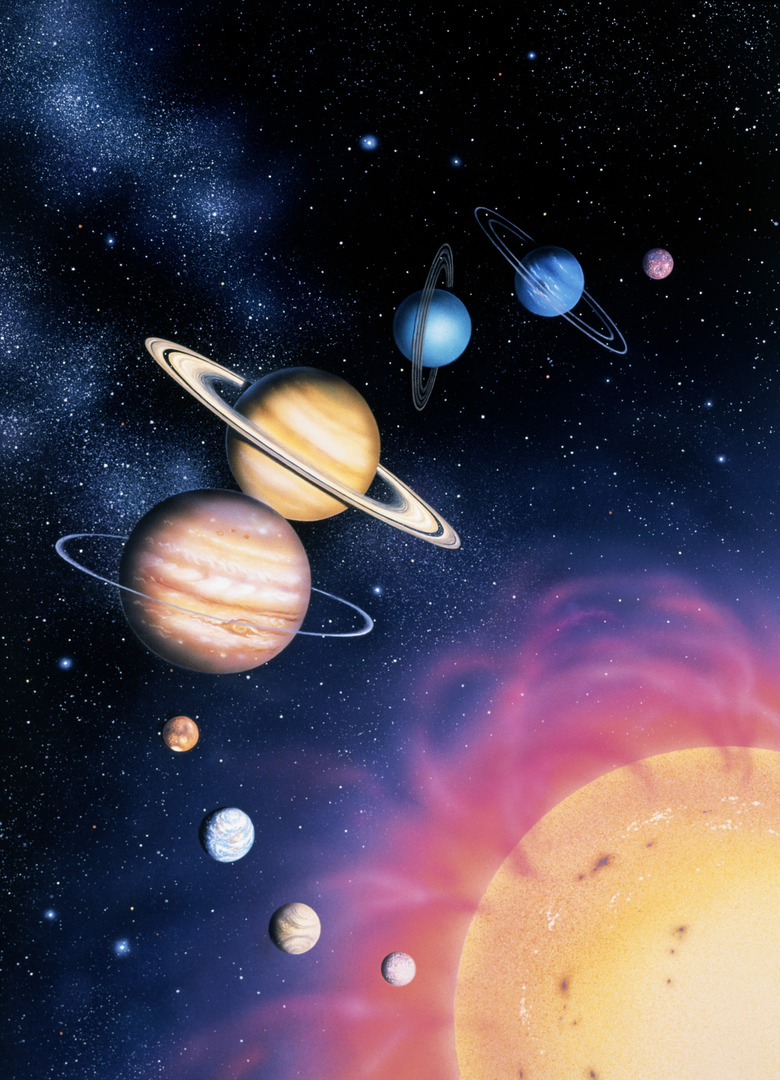Which Planet Apparently Shrank In Diameter?
The smallest planet in the solar system is getting smaller. Earth is a mid-sized planet, and 20 Mercurys could fit inside its volume. Although Mercury is only 4,879 kilometers (about 3,000 miles) in diameter, astronomers have evidence that it is shrinking. Spacecraft passing by the planet have sent information back to Earth, and scientists have noticed unusual landforms. Pictures of Mercury's surface provide clues about transformations that have happened over long periods of time.
Visits to the Planet
Visits to the Planet
In November 1973, NASA launched the Mariner 10 spacecraft to collect data on Mercury. Almost five months later, it flew by the planet for the first time. In the following year, Mariner made two more passes by Mercury. Photos taken from a relatively close range showed wrinkles across the surface. In 2004, NASA's Messenger probe headed for the planet. Between January 2008 and September 2009 the probe approached Mercury three times. In 2011, Messenger entered the planet's orbit. Pictures showed steep ridges on the surface.
Take a Look
Take a Look
The photos taken by Mariner 10 covered about 45 percent of Mercury's surface. Scientists then used measurements of the wrinkles and ridges on the surface to estimate the amount of planetary shrinkage. It appeared that the planet was contracting, much like a grape shrivels into a raisin. Many years later, Messenger sent back photos of the entire planet using better lighting and equipment. Details in these pictures showed more about the planet's topology. In addition to the cliffs, Messenger found many deformations on the surface, creating shapes such as circles, arcs and polygons.
What's Happening
What's Happening
Mercury has an unusually large core for a planet. Much of it is iron, but its other components are unknown. Radar observations from Earth have discovered that part of the core is liquid. Mercury's shrinking appears to be due to the cooling of that center area. The small planet has such a large core that heat moves quickly from the center to the surface, and the core contracts. As it becomes smaller, the gravitational force between the core and the surface changes. This new pull causes ridges and wrinkles to form. So far, there is no evidence that any other planet's core is cooling.
Smaller and Smaller
Smaller and Smaller
Mercury began forming about 4.5 billion years ago. After reviewing data from Mariner 10, scientists believed that the diameter of Mercury had shrunk 2 or 3 kilometers (1.2 to 1.9 miles) since that time. Using computer models, however, researchers estimated that the reduction should have been far greater, between 10 and 20 kilometers (6.2 and 12.4 miles). In the 21st century, information collected from Messenger indicated that shrinkage was more in line with the computer models: about 11 kilometers, or almost 7 miles.
References
- Universe Today: Planets in Order of Size
- Universe Today: What Is the Smallest Planet in the Solar System?
- NASA: Solar System Exploration: Mariner 10
- Smithsonian: Newsdesk: MESSENGER Finds Unusual Groups of Ridges and Troughs on Mercury
- Scientific American: Mercury Is Shrinking More Than Thought
- Nature: Mercury Shrinking More Than Thought
- New York Times: Flyby of Mercury Answers Some Old Questions
- Smithsonian: National Air and Space Museum: The Surface of Mercury
Cite This Article
MLA
Sherwood, Susan. "Which Planet Apparently Shrank In Diameter?" sciencing.com, https://www.sciencing.com/planet-apparently-shrank-diameter-20778/. 24 April 2017.
APA
Sherwood, Susan. (2017, April 24). Which Planet Apparently Shrank In Diameter?. sciencing.com. Retrieved from https://www.sciencing.com/planet-apparently-shrank-diameter-20778/
Chicago
Sherwood, Susan. Which Planet Apparently Shrank In Diameter? last modified March 24, 2022. https://www.sciencing.com/planet-apparently-shrank-diameter-20778/
